This was my first serious flyfishing trip on my own. I’d done a fair amount of spin-fishing in my younger days, and had tried flyfishing a few times with a buddy or guide over the years. But now, approaching age 50, I decided to get serious about flyfishing.
Early spring found me driving 220 mile north from Detroit to the AuSable River system. This was my first serious flyfishing trip on my own. I’d done a fair amount of spin-fishing in my younger days, and had tried flyfishing a few times with a buddy or guide over the years. But now, approaching age 50, I decided to get serious about flyfishing.
Since the previous summer, I read up, watched videos, and quizzed the guys in the local fly shop. I acquired basic flyfishing equipment and tested it on bluegill and bass in local ponds. I developed a beginner’s understanding of flyfishing techniques and the types of fly hatches on northern Michigan trout streams. On this spring trip, I specifically was targeting the current reported hatch: CADDIS FLIES.
DAY ONE
May 6, 1:30-4:30
Partly cloudy, breezy, temperature in the 40s. I drove into a vast nature preserve near Grayling, Michigan. This thickly forested preserve is accessible via a rustic two-track road that parallels the Au Sable River for 15 or 20 miles. Every half mile or so is small pull-off spot signaling a good area of the river below. I parked few miles in, donned waders, and hiked the pleasant couple of hundred yards downhill through the woods to the river. The river here is 60-80 feet wide, 2-4 feet deep, fairly swift over gravel bottom (with occasional large stones and fallen trees), gently curving downstream, and completely isolated within the forest.
I waded to midstream and looked upstream and down for activity on the water. There was no apparent hatch or surface action of any kind – it was time to fish wet (i.e., underwater). I knew that most anglers in this region fished with nymphs in these circumstances. But I quickly selected a Mickey Finn streamer over the nymphs in my box. I did not fully understand the underwater habits of fly nymphs or the art of nymphing. But I could totally imagine trout smacking hapless minnows struggling to right themselves in the current. And this I could imitate with the Mickey Finn I was tying on.
My gear is on the light side – a 3 oz, 8 1/2 ft, 5wt rod, floating line ending with a 9 ft 7x leader. The light leader (two pound test) is due to my conviction that any lack of fishing action is always the result of heavy line spooking the fish.
I headed downstream deciding to focus on the likely looking run down the middle of the river. I began casting across and down, letting the streamer swing into the middle current then stripping it back in. Using this technique, I understood that a large percentage of hits occur at the first split second that the streamer rights itself in the current directly downstream. I proceeded slowly down the middle of river making several short casts from right to left at each stop, and then longer casts from the same position.
The river and woods were devoid of evidence of humans. Trees and bushes had their first blush of green, and earlybird plants such as trillium and skunk cabbage were getting a good start. Blue jays cried out warnings when they saw me, and a few ducks scuttled off ahead of me when I rounded bends. A less observant mink worked the bank oblivious of me standing midstream 20 feet away.
I did not see any beaver, but there was a lot of evidence of their presence in this area in terms of gnawed and fallen saplings and trees. This work was in vain, however, since the department of natural resources kept this prized river free of obstruction.
Action was slow – a couple of sluggish swipes at the streamer, and equally sluggish reactions on my part. I switched to a smaller streamer and began interspersing a "plan B" retrieve that I’d read about. Rather than stripping the streamer back underwater, I pulled it in as fast as possible right at the surface, producing a wake like a little motorboat.
This rapid retrieve almost immediately generated a comic summersault into the air by one feisty little brook trout that missed the boat. Twenty minutes later, another quick retrieve resulted in slashing attack. I caught and released my first fish of the trip, another brook trout.
A proper hatch didn't develop that afternoon. A few caddis blew about in the wind, and rising fish were rare. I continued using streamers the remainder of the day and missed another couple strikes before heading out of the river, thoroughly chilled from the hours of wading in cold water.
DAY TWO
May 7, 2:00-5:00
Partly cloudy, warming to the upper 50s. Caddis are mainly afternoon risers so I spent the morning scouting a small creek, then returned to yesterday's spot on the Au Sable. I was stoked to find caddis in the air and fish starting to rise. I headed upstream through a straight stretch of water leading to lively rapids. By the minute, the hatch grew thicker, becoming a blizzard over the river and in the bushes. Caddis flies chaotically zigged and zagged and soared and swooned like drunken sailors. The odd thing about this frenzy was that it was happening silently, in the hush of the forest. It seemed like a rock band should be playing.
Very aggressive rising commenced. While I had been catching fish in the middle run of the river yesterday, these risers were mainly in current seams close to shore, especially where there was associated cover (and caddis). They manned positions in sweet current slicks alongside logs, rocks, or bushes in the water as steady supplies of downed caddis swept by.
I tied on an elk-hair caddis fly, headed upstream, and began casting, reminding myself to keep as much line off the water as possible in order to reduce drag and increase tautness for setting the hook. I cast to specific risers and generally good-looking spots. The casts were generally right on the money producing good drifts. But the fish weren't buying it.
After 20 minutes of this rejection, I stopped and took stock. I managed to catch a couple of the swarming caddis flies in my hand. On inspection, I noted the fly I was fishing with was twice the size of those in the air. Duh! I went to the smallest caddis in my box (#16?) and proceeded.
A rising fish fed alongside a sweeper jutting into the river. My first cast with the smaller fly landed 10 feet upstream from the fish and drifted perfectly down to it. Bam! A good fish took it. Damn! I missed setting the hook.
I missed two more risers then landed a small brook trout as I continued upstream. I came to the bottom of rapids. This was a stretch of fast, boulder-strewn water with good runs and timber along shore. My leader was due for a change and, given the rough nature of this stretch of water, I decided to go with a slightly heavier 6x.
The caddis were especially thick here, but it was difficult to spot rising fish due to the churn in the water. Then I picked up on some serious splashing up near the beginning of the rapids, in the run along the bank on my right. I slowly made my way toward the spot. On either side of a large, mostly submerged boulder, a fish was gorging itself. The question was how to fish to each individually without screwing up and putting them both down.
I made a short cast to the bank side of the fish on the inside of the boulder. Slurp! A 10-inch brook trout turned and took the fly. I set the hook and, before he knew what happened, I steered him down from the boulder so as not to spook the other fish. He then realized his situation and took off on several game runs back and forth across the rapids before I brought him in. I released the fish, dried the fly, and went after the other side of the boulder, where the other fish continued to blissfully feed. Gulp! A 14-inch brown took, and another good tussle. I was liking this caddis hatch!
After that peak, the action slowed in the rapids. There seemed to be simply too many flies in the water for my offering to attract attention, or perhaps the fish were getting full (does this happen?). I worked back downstream where the hatch was quieter. There weren't as many flies or rising fish, but those that were rising were hungrier or less selective, and I was able to connect with a few more brook trout.
Near the spot where I was to leave the river and hike back to my car, I saw other anglers for the first time on this trip, after nearly two full days on gorgeous trout water by myself. An unusual procession approached from downstream – two women wading and fishing, accompanied by two men following in separate canoes. I cast a couple of times to a last riser, and then left the river to let the group fish and paddle through. I watched for a few minutes as one of the anglers deftly cast and hooked the riser I left behind.
Several years and many kinds of hatches later--from green drakes in the Western U.S. to "flesh flies" in Alaska--early spring caddis in Michigan remains my favorite.
INFORMATION SOURCE
A useful information source on the Au Sable region is the web site of Gates Au Sable Lodge in Grayling, MI, USA. The site has current fishing reports, hatch charts, photos, maps, and lists of relevant books. The lodge provides accommodations, guide services, fly shop, and restaurant.
- Log in to post comments

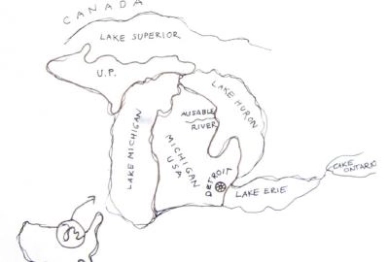
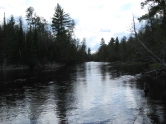
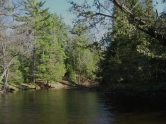
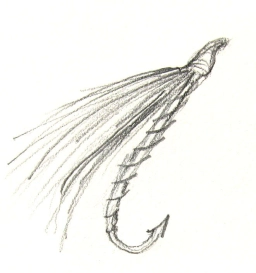
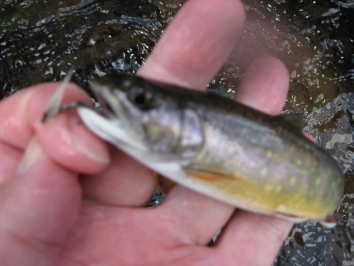
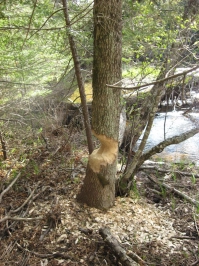
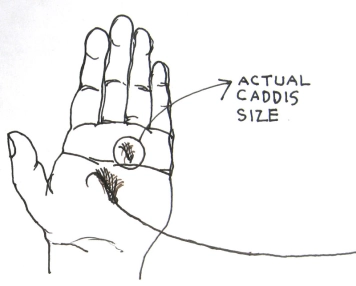
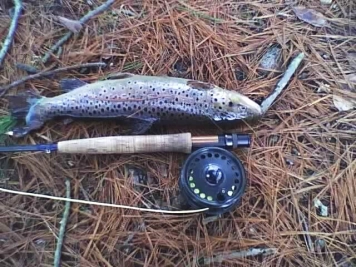


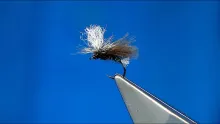
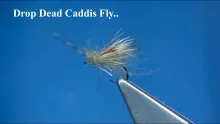
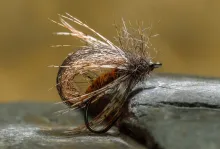
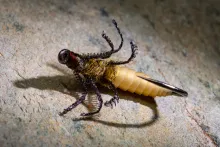
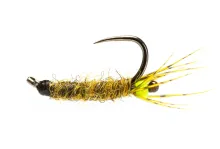

Cool! I'll be there
Cool! I'll be there next week! can't wait
Thanks for the article
Nick
You get a gold star
You get a gold star from me!
Bravo John!
I'll be
Bravo John!
I'll be there next May!
Sue